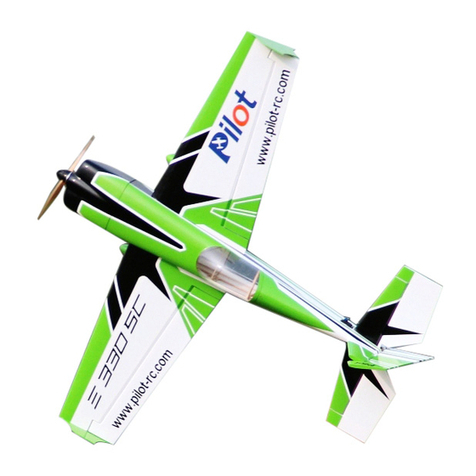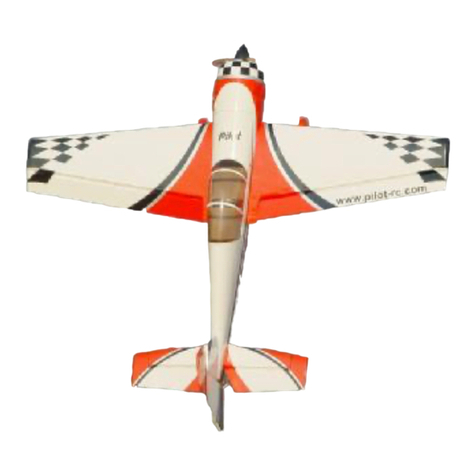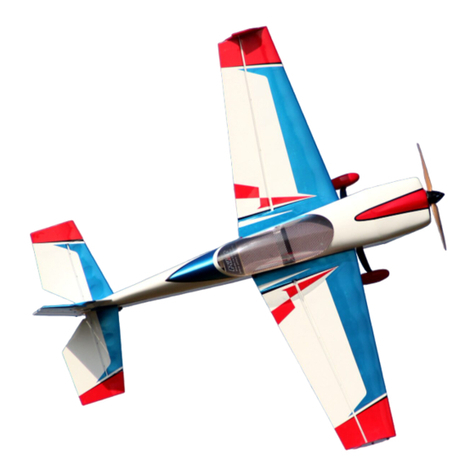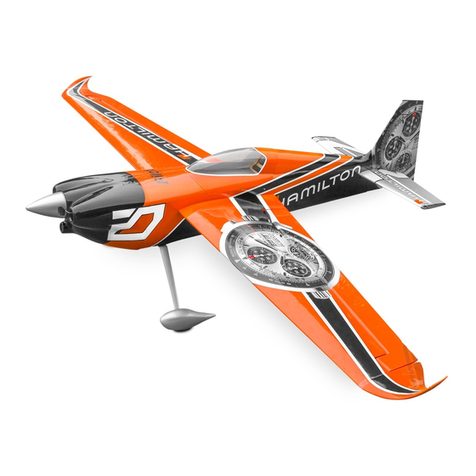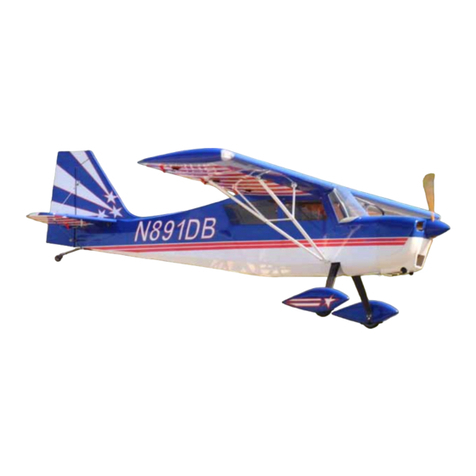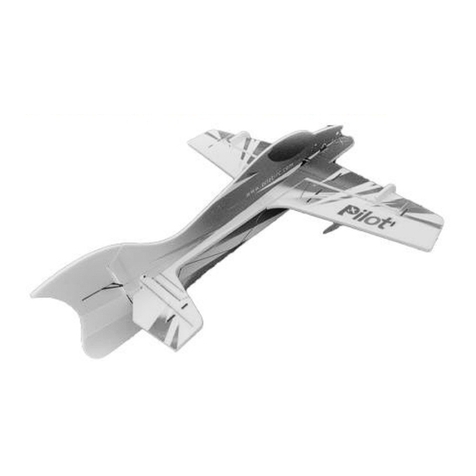
Safety Precautions
This is not a Toy! This R/C ARF kit and the model you build from this kit is not
a Toy!
It is capable of serious bodily harm and property damage. It is YOUR responsibility as
your alone to assemble correctly, properly installing all R/C components and fling gear
(engine, tank, radio, pushrods, etc. and to test the model and fly it only with experi-
enced, competent help from an experienced pilot using commonsense and in accor-
dance with national and international safety standards as set forth by many Model Air-
plane Associations. It is suggested that you join such an organization and adhere to
there rule for safety of fellow pilots. If you are just starting in R/C this in not the plane
for you to learn how to fly. This is not a beginners airplane but designed for advance
pilots who know aerobatics. If you need help contact a local hobby shop and purchase
a trainer. Join a model airplane club in your area and take lessons from a veteran R/C
flight instructor.
Limits Of Responsibility: We accept no responsibility for crash damage. It is impossible to
determine for certain whether crash damage was the result of a radio system failure or pilot er-
ror. We accept no responsibility for crash damage occurring during the use of a radio controlled
model. We accept no responsibility for improper installation of our products.
Disclaimer and Limitation of Liability as to Products Sold
All Pilot RC products are guaranteed against defects for the period of 30 days. EXCEPT AS
EXPRESSLY STATED HEREIN, Pilot RC makes no representations or warranties, either ex-
press or implied, of any kind with respect to products sold on the Pilot RC site. EXCEPT AS
EXPRESSLY STATED HEREIN, Pilot RC expressly disclaims all warranties, express or im-
plied, of any kind with respect to products sold on this site, including but not limited to, mer-
chantability and fitness for a particular purpose. By placing an order, you agree that the sole
and exclusive maximum liability to Pilot RC arising from any product sold on the Pilot RC
sites shall be the price of the product ordered. In no event shall Pilot RC, its directors, officers,
employees and representatives be liable for special, indirect, consequential, or punitive dam-
ages related to product sold.
Except in respect of death or personal injury caused by Pilot RC\'s negligence, under no cir-
cumstances whatsoever shall Pilot RC. be liable to the buyer for any loss or damage whatso-
ever (including but not limited to loss of profit or the loss of any other form of financial or non-
financial benefit; loss of use of or damage to any property; work stoppage; any special, indirect,
incidental or consequential loss or damage; costs; expenses; and other claims for compensa-
tion), arising out of or in connection with the sale of any Pilot RC. product (including any mis-
representation (unless fraudulent); any breach of an implied or express warranty, condition or
other term; or any breach of a common law duty), in an amount exceeding the price of the Pilot
RC. product giving rise to the claim, except as expressly agreed in writing by Pilot RC.
9
